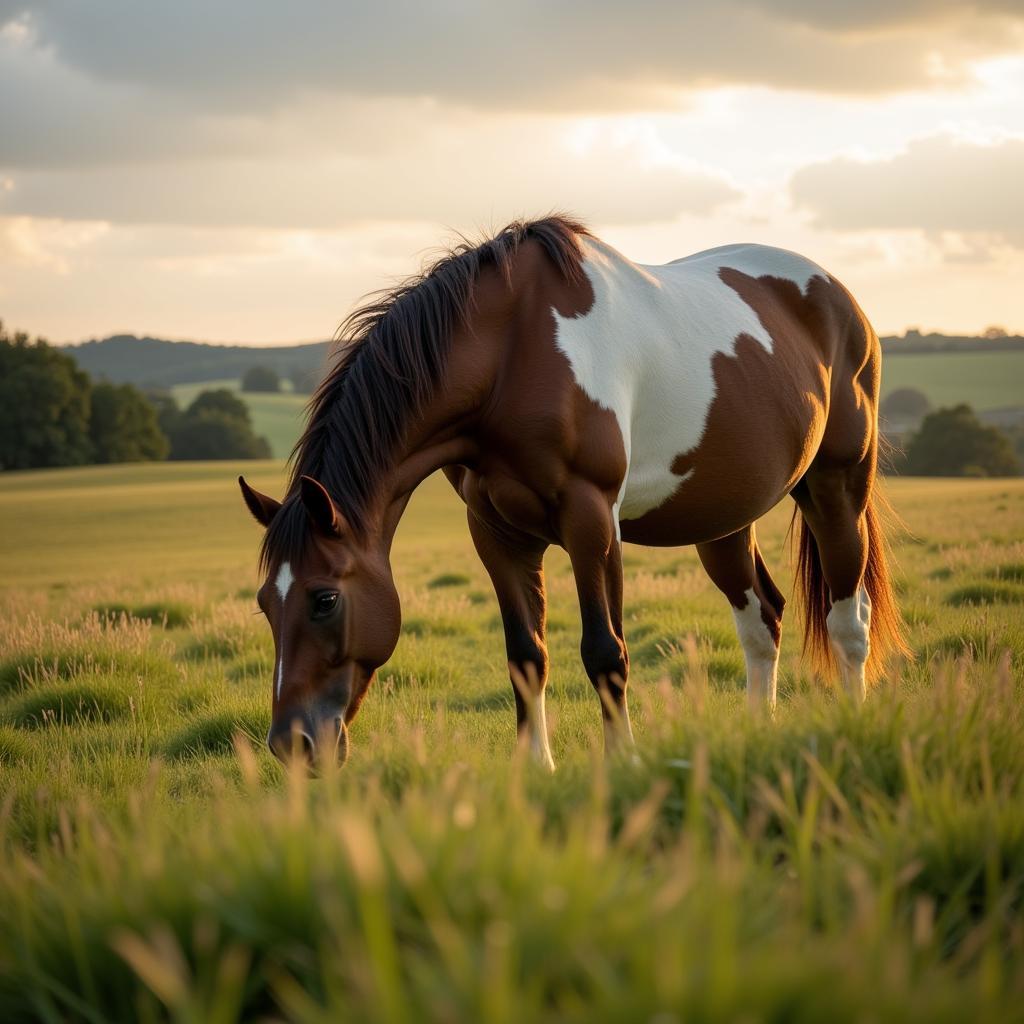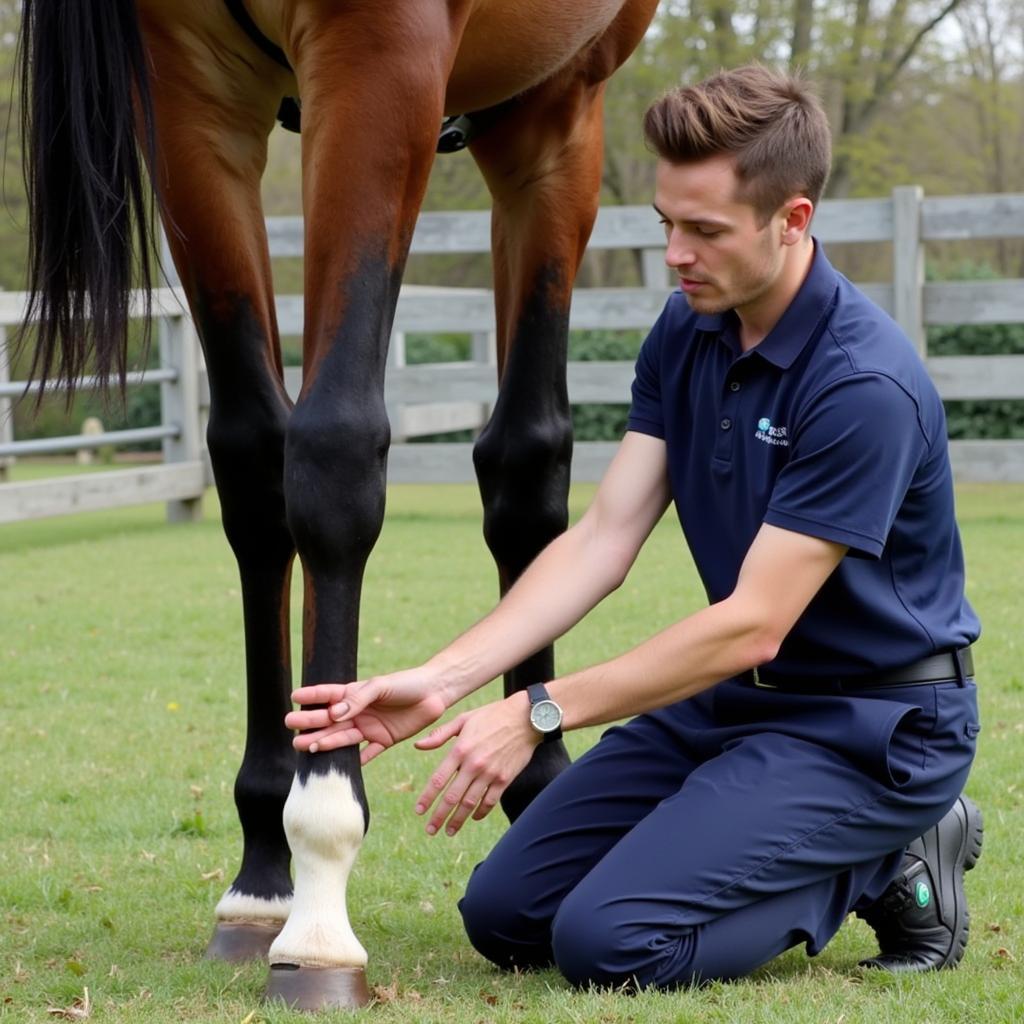The image of a “Horse In Jeans” might seem amusing at first, but it represents a fundamental misunderstanding of equine anatomy and welfare. While the thought of a horse sporting denim might seem humorous, it’s crucial to remember that horses are not humans and dressing them up in human clothes can be detrimental to their health and well-being.
Why You Should Never Put Jeans on a Horse
Horses have a unique physiology that requires careful consideration when it comes to their care. Unlike humans, who benefit from clothing for warmth and protection, horses have evolved their own natural “clothing” – their coat.
- Risk of Injury: Jeans and other types of clothing can restrict a horse’s movement, leading to discomfort and potential injuries. Their legs are designed for a full range of motion, and any constriction can cause chafing, sores, and even more serious musculoskeletal problems over time.
- Overheating: Horses regulate their body temperature differently than humans. Their coats provide insulation and help them stay cool in warm weather. Adding an extra layer of clothing like jeans can disrupt this natural process and lead to overheating, especially during physical activity.
- Digestive Issues: Unlike humans, horses can’t easily remove clothing if they become uncomfortable. This can lead to them trying to chew or rub against objects to get rid of the uncomfortable clothing, potentially ingesting fabric which can cause serious digestive problems.
 Horse peacefully grazing in a field
Horse peacefully grazing in a field
Alternatives to Putting Clothes on Horses
While dressing your horse in jeans is a definite no-go, there are safe and appropriate ways to provide them with warmth and protection when necessary:
- Horse Blankets: Specifically designed for equine anatomy, horse blankets come in various weights and materials suitable for different weather conditions. They offer insulation, waterproofing, and breathability without hindering movement.
- Fly Sheets and Masks: During warmer months, lightweight fly sheets and masks can protect your horse from pesky insects without causing overheating.
- Leg Wraps and Boots: For protection during work or trail riding, specially designed leg wraps and boots offer support and prevent injuries.
Understanding Horse Behavior and Communication
Horses communicate primarily through body language. Subjecting them to the stress of unfamiliar clothing can hinder your ability to understand their cues.
- Signs of Discomfort: Look out for signs that your horse is uncomfortable, such as pawing the ground, pinning their ears back, swishing their tail agitatedly, or trying to bite or kick at the clothing.
- Importance of Positive Reinforcement: Building a trusting relationship with your horse based on positive reinforcement is crucial. Instead of focusing on dressing them up, prioritize activities that promote their well-being and strengthen your bond, like grooming, training, and spending quality time together.
Expert Insight
“As an equine veterinarian, I often encounter well-intentioned owners who don’t realize the potential harm of putting human clothes on their horses,” says Dr. Emily Carter, DVM. “It’s vital to remember that horses have specific needs and what might seem like a harmless act can actually be quite dangerous.”
 Veterinarian carefully examining a horse's leg
Veterinarian carefully examining a horse's leg
Conclusion
While the idea of a “horse in jeans” might elicit a chuckle, it’s our responsibility as horse owners and enthusiasts to prioritize their well-being above our amusement. Let’s appreciate these magnificent creatures for their natural beauty and ensure their comfort and safety by choosing appropriate equine gear and focusing on their true needs.
For expert advice on horse care or to explore a range of safe and effective horse products, contact Justus Horses USA at 0772127271, [email protected] or visit our location at QGM2+WX2, Vị Trung, Vị Thuỷ, Hậu Giang, Việt Nam. Our dedicated team is available 24/7 to assist you.